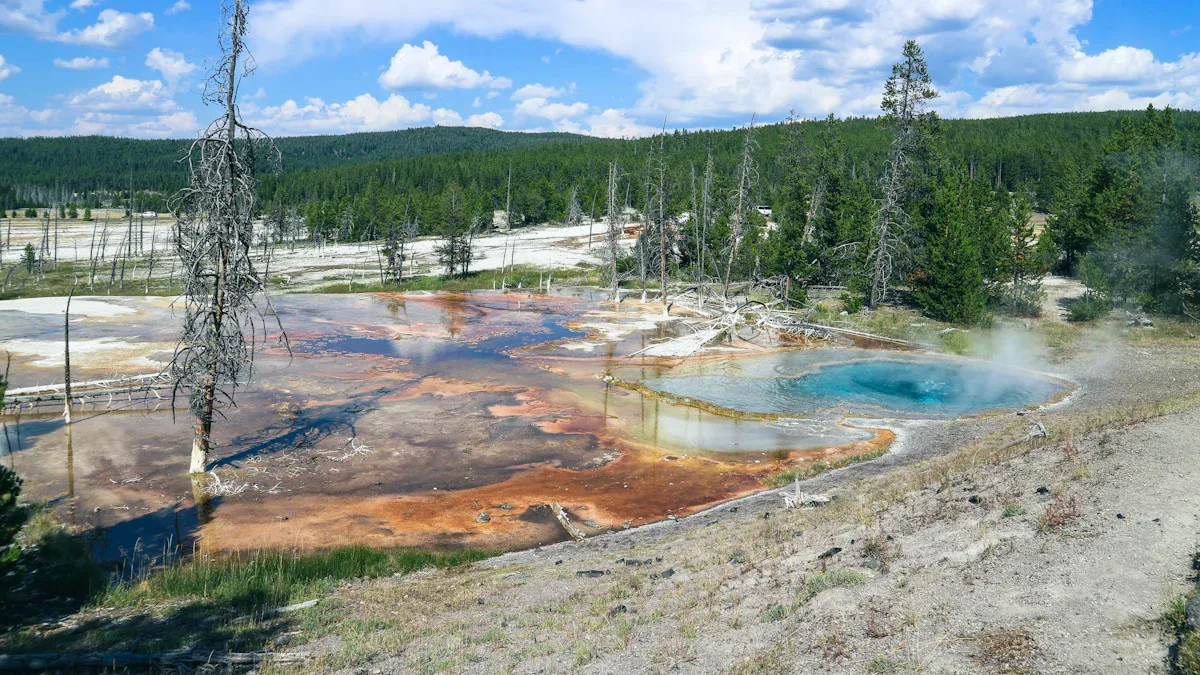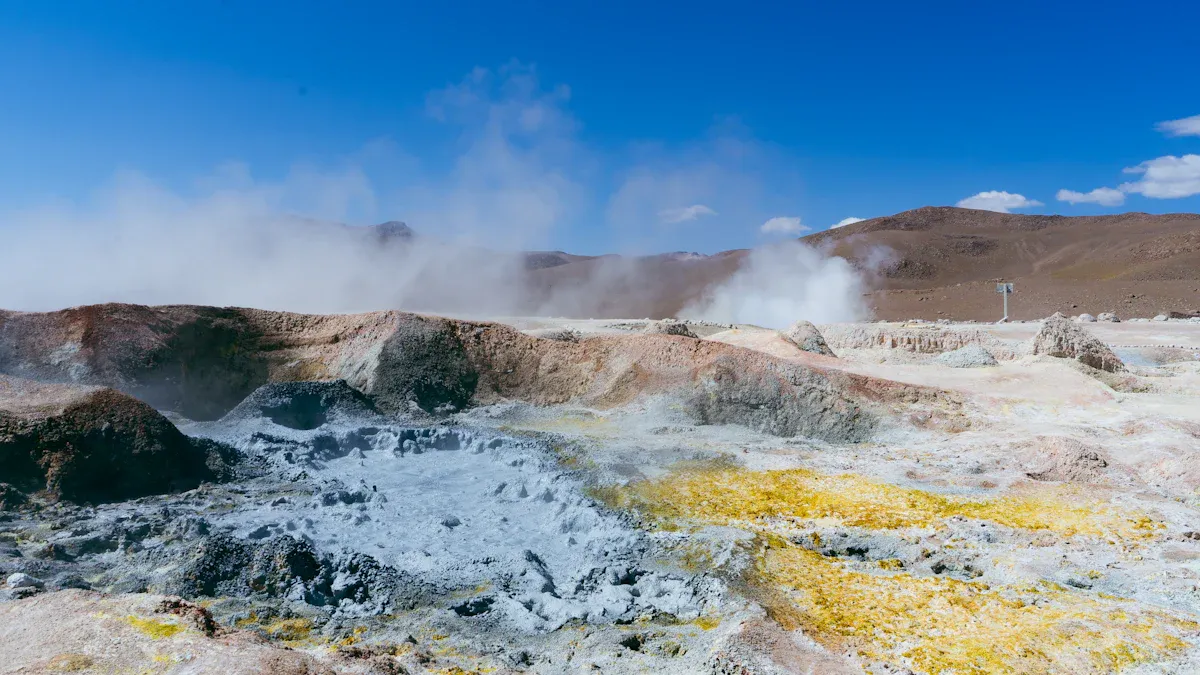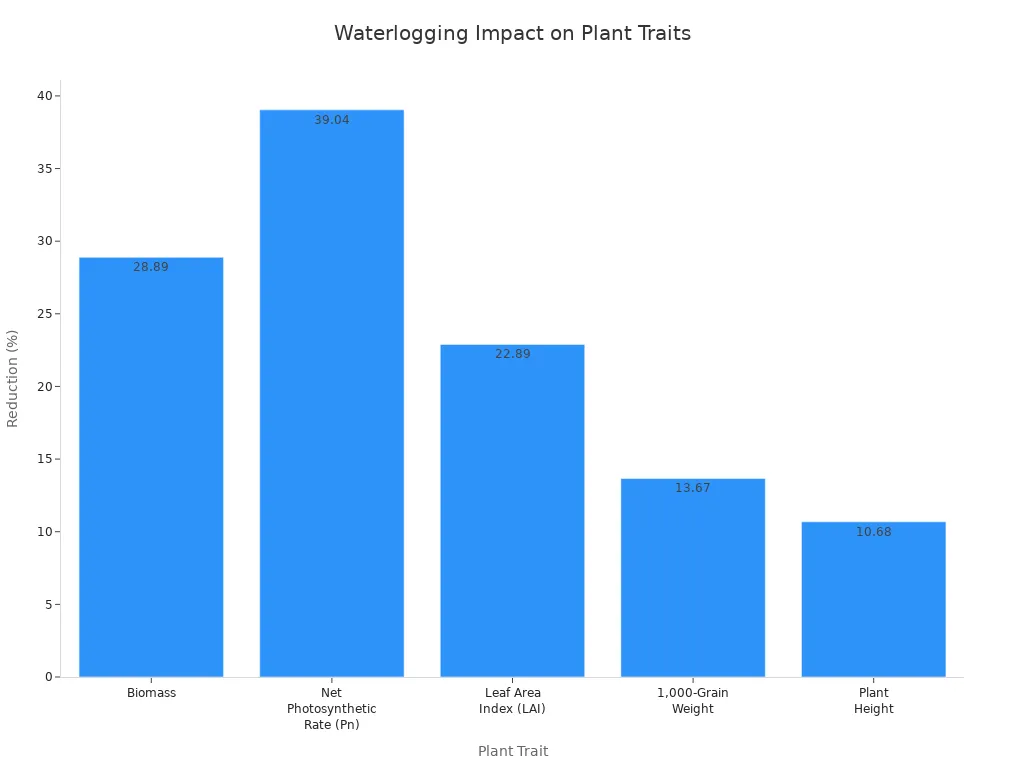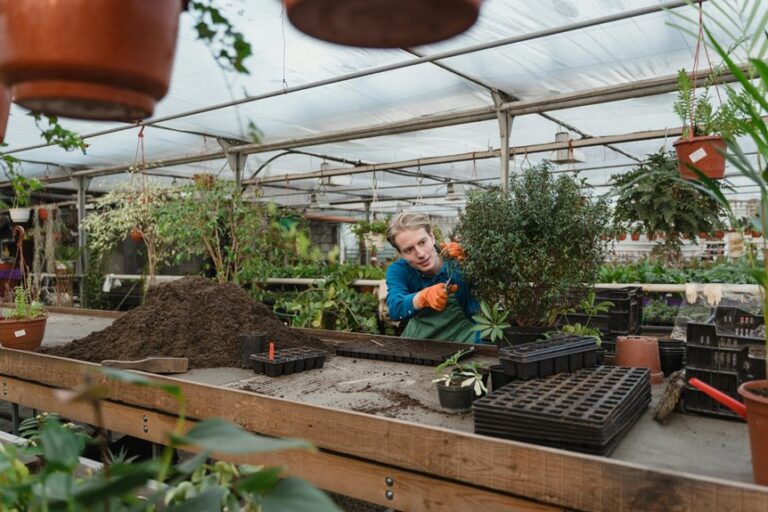
Geysers create a fascinating environment where the earth’s heat meets the surface. This unique setting significantly impacts the plants that call it home. You may find that soil conditions near geysers differ greatly from those in non-geothermal regions. For instance, these soils often contain higher levels of silicon, potassium, and strontium. However, they tend to have lower levels of titanium, vanadium, iron, cobalt, and calcium. Understanding these soil conditions near geysers is crucial. It helps you appreciate how they influence plant growth and survival in such extreme habitats.
Key Takeaways
Soil near geysers often has extreme pH levels, affecting nutrient availability. Acidic soils can hinder plant growth, while alkaline soils can also pose challenges.
Elevated levels of toxic metals like arsenic and lead in geyser soils can harm plants. Understanding these risks is essential for appreciating plant health in these areas.
High salinity in soils near geysers reduces water availability for plants. This can lead to dehydration and stress, impacting their growth and survival.
Waterlogging creates oxygen deficiency in soils, which can stunt plant growth. Anaerobic pathogens thrive in these conditions, further threatening plant health.
Plants near geysers develop unique adaptations, such as shallow roots and water management strategies, to survive extreme conditions and toxic environments.
Soil Conditions Near Geysers

pH Levels
Soil near geysers often has extreme pH levels. You may find that the pH of water in hydrothermal features at places like Norris Geyser Basin ranges from 1 to 8. This wide range can create challenges for plant growth.
Acidic Soils: When the pH drops below 5, it can hinder the availability of essential nutrients. Many plants struggle to absorb nutrients in highly acidic conditions.
Neutral to Alkaline Soils: Conversely, soils with a pH above 7 can also pose problems. Some plants may not thrive in these conditions either.
Research shows that different plant species respond uniquely to varying pH levels. For example, the table below summarizes how certain native plants react to different pH levels:
Species | pH Level Tested | Germination Response |
|---|---|---|
Conyza canadensis | 4.7, 5.7, 6.7, 7.7 | Dependent on nitrogen, not pH |
Origanum compactum | Various | No significant pH effect on germination |
Capsella bursa-pastoris | Various | No significant pH effect on germination |
Ambrosia artemisiifolia | 5.0 | Positive growth at low pH, limited at neutral |
Metal Toxicity
Soils near geysers often contain elevated levels of toxic metals. Common metals found in these areas include:
Arsenic
Lead
Copper
Selenium
Mercury
These metals can have harmful effects on plant health. For instance, elevated concentrations of non-essential metals like lead, cadmium, and nickel can adversely affect plants. Here are some documented effects:
Lead Exposure: Linked to memory impairment, high blood pressure, and nerve damage.
Cadmium: Can cause kidney damage and has long-term carcinogenic effects.
Nickel Absorption: May lead to immunotoxicity, allergies, and skin disorders.
Understanding these soil conditions near geysers is crucial for appreciating how they impact plant growth and survival. The unique challenges posed by extreme pH levels and metal toxicity shape the flora that can thrive in these environments.
Soil Salinity and Plant Growth
Salinity plays a crucial role in determining how plants grow near geysers. High salt levels in the soil can create significant challenges for plant life. You may wonder how salinity affects osmotic potential and water uptake.
Osmotic Potential
Osmotic potential refers to the ability of water to move through plant roots. When salinity increases, the osmotic potential decreases. This means that plants struggle to absorb water from the soil. Under saline conditions, the water inside plant cells can become less available. Research shows that salinity significantly impacts seed germination and early growth stages of various plant species. For example, studies indicate that the germination rates of plants like Salicornia europaea drop under high salt concentrations. This reduction in germination can hinder the establishment of seedlings, affecting overall plant growth.
Water Uptake Challenges
High salinity creates additional challenges for water uptake. When salt levels rise, plants face difficulties in maintaining their water balance. This situation can lead to dehydration and stress. The table below summarizes how different salinity levels impact species diversity in geothermal areas:
Salinity Level | Species Diversity Impact | Study Reference |
|---|---|---|
Moderate/Low | Greater diversity of species adapted to those conditions | Mangrove tree growth is size-dependent across a large-scale salinity gradient |
High | Lower diversity and complexity | Mangrove tree growth is size-dependent across a large-scale salinity gradient |
Urban Areas | Changes in species composition linked to salinity | Mangrove tree growth is size-dependent across a large-scale salinity gradient |
As salinity increases, plants may also experience reduced transpiration rates. This reduction can lead to higher canopy temperatures and decreased leaf area. For instance, quinoa plants exhibit strict control over stomatal opening under saline conditions, which helps them save water throughout their growth cycle.
Understanding these challenges is vital for appreciating how soil conditions near geysers affect plant health and survival.
Waterlogging Effects on Plants
Waterlogging occurs when excess water saturates the soil, leading to significant challenges for plants. This condition can severely impact plant health and survival, especially near geysers where geothermal activity can exacerbate moisture retention.
Oxygen Deficiency
When soil becomes waterlogged, it limits the amount of oxygen available to plant roots. Roots need oxygen for respiration, which is essential for energy production. In waterlogged conditions, oxygen levels drop significantly.
Studies show that aquatic adventitious roots can experience dramatic fluctuations in oxygen levels. For example, the roots of Tecticornia pergranulata can cycle between several hours of anoxia at night and steep increases in oxygen levels (up to 15 kPa) after sunrise. Similarly, Meionectes brownii shows fluctuations reaching up to 43 kPa in the afternoon, dropping to 3 kPa before sunrise. These variations greatly affect root respiration, as roots can only extend when oxygen is available during the day. Anoxia at night leads to ethanol production, which can harm the plant.
The lack of oxygen can lead to stunted growth and reduced biomass. In fact, waterlogging can reduce overall plant biomass production by nearly 29%. The table below summarizes the impact of waterlogging on various plant traits:
Trait | Reduction (%) |
|---|---|
Biomass | 28.89 |
Net Photosynthetic Rate (Pn) | 39.04 |
Leaf Area Index (LAI) | 22.89 |
1,000-Grain Weight | 13.67 |
Plant Height | 10.68 |

Anaerobic Pathogens
Waterlogged soils create an environment where anaerobic pathogens can thrive. These pathogens, which do not require oxygen to survive, can lead to diseases that further threaten plant health.
In saturated soils, pathogens such as Pythium and Phytophthora can proliferate. These organisms attack plant roots, causing root rot and other diseases. When roots are damaged, plants struggle to absorb water and nutrients, leading to further stress and potential death.
You must recognize that the combination of oxygen deficiency and the presence of anaerobic pathogens creates a hostile environment for plants. Understanding these effects helps you appreciate the resilience required for plants to survive near geysers.
Plant Adaptations to Extreme Conditions

Plants near geysers face extreme conditions. To survive, they develop unique adaptations. These adaptations help them cope with high temperatures, toxic soils, and limited water availability.
Root Adaptations
Many plants in geothermal soils exhibit special root adaptations. For example, mosses and liverworts often have shallow roots. These roots allow them to access moisture and nutrients in the top layers of hot soil. The dwarf swan-neck moss (Campylopus pyriformis) stands out as the most heat-tolerant plant. It thrives in soil temperatures reaching 72°C. These plants typically develop short roots or roots that spread laterally, which helps them endure the harsh conditions.
Water Management
Plants also employ various strategies to manage water loss during extreme heat. Here are some effective adaptations:
Reduced Leaf Surface Area: Smaller leaves help reduce transpiration.
Thick Cuticle: A thick outer layer minimizes water loss.
Stomatal Adaptations: Fewer or sunken stomata reduce evaporation.
CAM Photosynthesis: Stomata open at night to conserve water.
Root Adaptations: Extensive root systems allow for better water access.
Tissue Water Storage: Succulents store water for drought periods.
Heat stress can increase transpiration rates, leading to water stress that limits turgor pressure. This combination of heat and drought can severely impact plant biomass. For instance, maize can experience up to a two-thirds reduction in biomass under these conditions.
Plants also exhibit vital physiological reactions to endure drought stress. They partially close their stomata to reduce water loss. They adjust osmotic pressure to maintain cellular turgor and synthesize protective proteins. These adaptations are crucial for survival in extreme environments like those near geysers.
Understanding these adaptations helps you appreciate the resilience of plant life in such challenging habitats.
In summary, soil conditions near geysers significantly influence plant survival. You learned that extreme pH levels, metal toxicity, and salinity create unique challenges for flora. Additionally, microbial communities play a crucial role in nutrient cycling, impacting plant health.
Impact on Soil Conditions and Plant Survival | Description |
|---|---|
Reduced Water Availability | Decline in snowpack and changes in precipitation patterns lead to less water for soil and plants. |
Drying of Hydrothermal Features | Insufficient water replenishment may cause geysers and hot springs to dry up, affecting local ecosystems. |
Increased Mortality of Keystone Species | High mortality rates in whitebark pine due to climate change threaten species that rely on them for habitat and food. |
Decline of Wetland-Dependent Species | Diminishing wetlands could lead to a 40% decline in species like boreal chorus frogs, which depend on specific wetland habitats. |
These ecosystems are vital for biodiversity. You should recognize the need for further research and conservation efforts to protect these unique environments. Understanding these relationships helps you appreciate the resilience of plant life in such challenging habitats.
FAQ
What types of plants can survive near geysers?
You can find hardy plants like mosses, liverworts, and certain grasses thriving near geysers. These plants have adapted to extreme conditions, including high temperatures and toxic soils.
How does soil pH affect plant growth near geysers?
Soil pH near geysers can range from very acidic to alkaline. Extreme pH levels can limit nutrient availability, making it difficult for many plants to grow and thrive.
What role do toxic metals play in plant survival?
Toxic metals like arsenic and lead can harm plants by disrupting nutrient uptake and causing physiological stress. Some plants have developed mechanisms to tolerate or exclude these metals.
How does salinity impact plant health in geothermal areas?
High salinity reduces water availability for plants, making it harder for them to absorb moisture. This can lead to dehydration and stress, ultimately affecting their growth and survival.
What adaptations help plants survive in extreme conditions?
Plants near geysers develop adaptations such as shallow roots, reduced leaf surface area, and specialized water management strategies. These traits help them cope with heat, toxicity, and limited water availability.


